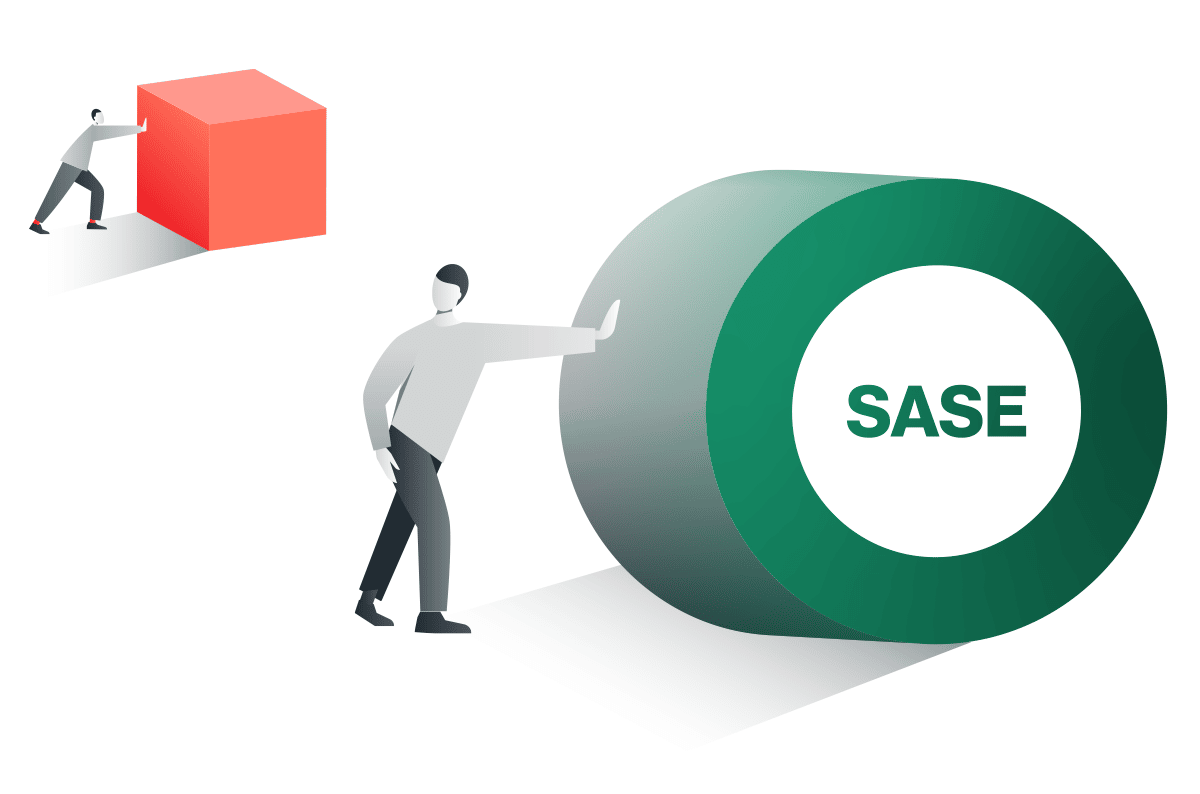From MPLS to SD-WAN to SASE: An Evolution of Enterprise Networking

|
Listen to post:
Getting your Trinity Audio player ready...
|
The way we do business is changing. As critical business applications migrate to the cloud, and the mobile workforce continues to grow, networking and security solutions need to evolve in order to meet the changing business needs. Gartner believes (and we agree) that the future of networking lies with SASE (Secure Access Service Edge) – the convergence of networking and security into one cloud service. Here’s why.
1990s – 2000s: MPLS and the Era of Clear Network Boundaries?
Back in the day, networking models were hardware-centric and manually configured. Applications, data, and services lived within private datacenters and relied on remote access solutions to connect remote workers. Dedicated network connectivity, known as MPLS, was the preferred approach for connecting remote locations.
MPLS provides predictable performance, low latency and packet loss, and central management. However, MPLS is expensive, capacity constrained, and provisioning of new links takes a long time. Alongside MPLS, Internet links co-existed as a lower quality and inexpensive alternative, which didn’t come with the performance and uptime guarantees of dedicated connectivity. Many organizations ended up integrating both into their networking environments in an active (MPLS), and passive backup (Internet).
Regardless, the WAN became complex, costly and the epitome of lack of agility. Operational costs grew as administrators had to manually configure and deploy routers and appliances needed in the branch offices: WAN optimizers for overcoming bandwidth limitations, stacks of security appliances for defending the Internet perimeter, packet capture and analysis appliances for visibility and more. Maintaining such a setup was becoming increasingly difficult.
2000s – 2010s: Moving to Software-Defined WAN
Next came the attempt to fill the gaps created by the limitations of MPLS and the public Internet with SD-WAN. SD-WAN automates the use of multiple links (MPLS, xDSL, Fiber, Cable, and 4G) to increase overall network capacity, improve agility to speed up site provisioning, automatically adjust to changing network conditions, and reduce overall cost per megabit.
SD-WAN offers a cost-efficient and flexible alternative to MPLS, but SD-WAN alone can’t provide a complete WAN transformation. It fails to deliver the security, cloud readiness and mobility required to support the digital business. As a result, IT teams find themselves dealing with technological silos, built upon point products that are loosely integrated and separately managed.
Today: Network and Security Delivered from the Cloud (SASE)
In the digital age we all live in, enterprise networks must extend to the cloud, remote locations, and mobile users. This is easier said than done. IT traditionally responds to new business needs with point products. For example, SD-WAN is used to address the high cost and capacity constraints of MPLS; cloud acceleration and security appliances are deployed to support cloud migration; branch security and WAN optimization are needed for distributed locations; and VPN enables remote users to access business applications.
This type of network architecture, built on a pile of point products and appliances, increases complexity and cost for IT, and is hard pressed to support the needs of the digital business for optimization, security and efficiency. As Gartner notes, “In essence, complexity is the enemy of availability, security and agility” *. There must be a simpler way. There is, and it’s called SASE.
SASE is a new infrastructure category introduced by Gartner in 2019. It converges multiple point solutions such as SD-WAN, Next-gen firewalls, secure web gateway, Software defined perimeter (SDP), and more into a unified, global cloud-native service. SASE enables IT to provide a holistic, agile and adaptable service to the digital business.
According to Gartner, “Digital transformation and adoption of mobile, cloud and edge deployment models fundamentally change network traffic patterns, rendering existing network and security models obsolete.” **
This is why Gartner considers SASE to be transformational, providing enterprises with an agile, scalable and elastic platform to support their digital business needs today, and into the future.
* Gartner, “Avoid These ‘Bottom 10’ Networking Worst Practices,” Vivek Bhalla, Bill Menezes, Danellie Young, Andrew Lerner, 04 December 2017
** Gartner, “Market Trends: How to Win as WAN Edge and Security Converge Into the Secure Access Service Edge,” Joe Skorupa and Neil MacDonald, 29 July 2019
Disclaimer:
Gartner does not endorse any vendor, product or service depicted in its research publications, and does not advise technology users to select only those vendors with the highest ratings or other designation. Gartner research publications consist of the opinions of Gartner’s research organization and should not be construed as statements of fact. Gartner disclaims all warranties, expressed or implied, with respect to this research, including any warranties of merchantability or fitness for a particular purpose.









